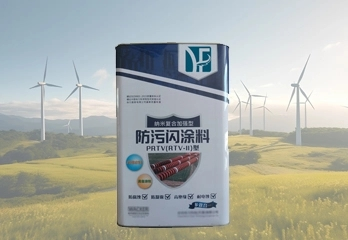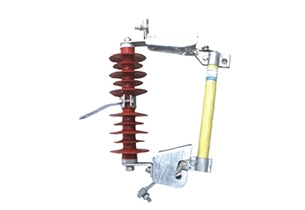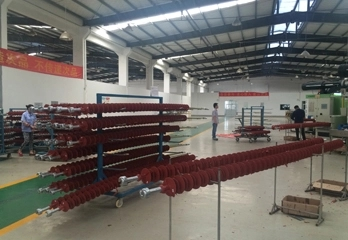en
+
In the realm of electrical transmission and distribution systems, insulators play a crucial role in ensuring the safe and efficient flow of power. Suspension insulators, in particular, are key components that provide support and electrical isolation for overhead power lines. This article delves into the intricacies of suspension insulators, exploring their design, advantages, differences from strain insulators, and potential drawbacks.
Suspension insulators are critical components used in overhead electrical transmission and distribution systems to support and electrically isolate conductors from supporting structures. They are designed to withstand high voltages and provide mechanical strength to hold conductors in place. The typical construction of a suspension insulator involves a series of insulator units arranged in a string, creating a chain-like configuration. These units are made from materials such as porcelain or composites and are characterized by sheds that enhance electrical performance. The primary purpose of suspension insulators is to suspend conductors vertically from supporting structures in straight sections of power lines, preventing electrical current from flowing to the ground.
Suspended insulators offer several key advantages in electrical transmission and distribution systems:
High Voltage Capability: Suspension insulators are designed to withstand high voltage levels, making them suitable for use in transmission lines where elevated voltages are common.
Mechanical Strength: These insulators provide excellent mechanical strength, enabling them to withstand various mechanical stresses. This includes factors such as wind-induced forces, the weight of conductors, and the impact of ice or other environmental conditions.
Ease of Maintenance: Suspension insulators are relatively easy to maintain. They can be visually inspected for signs of contamination or damage, and if needed, individual units can be replaced without disrupting the entire power line.
Versatility in Applications: Suspension insulators are versatile and find applications in straight sections of power lines where conductors need to be suspended vertically. This adaptability makes them suitable for a range of transmission and distribution scenarios.
Cost-Effective Design: While certain materials, such as composite materials, might have a higher initial cost, suspension insulators are generally considered cost-effective due to their longevity and low maintenance requirements.
Reduction of Electrical Stress: The design of suspension insulators helps reduce electrical stress on the conductor and supporting structures, contributing to enhanced system reliability.
Improved Performance in Harsh Conditions: Suspension insulators, particularly those made from composite materials, often exhibit better performance in harsh environmental conditions, including areas with high levels of pollution or contamination.
Modular Replacement: In the event of damage or contamination affecting a specific unit, suspension insulators allow for individual units to be replaced without the need to replace the entire string, facilitating a more modular and cost-efficient approach to maintenance.
Overall, the main advantages of suspension insulators lie in their ability to provide electrical insulation, mechanical support, and reliable performance in a variety of conditions, contributing to the overall efficiency and longevity of overhead power transmission systems.
While suspension insulators offer several advantages, they are not without their drawbacks. Here are some disadvantages associated with suspension type insulators:
Vulnerability to Pollution: Suspension insulators are susceptible to pollution, particularly in areas with high levels of airborne contaminants. Contamination on the insulator surface can compromise its insulating properties and increase the risk of flashovers.
Cleaning Requirements: In polluted environments, suspension insulators may require regular cleaning to maintain optimal performance. This additional maintenance can increase operational costs and downtime.
Fragility (for Porcelain Insulators): Traditional suspension insulators made of porcelain can be relatively fragile, especially compared to modern composite materials. Care must be taken during handling, transportation, and installation to avoid breakage.
Weight and Mechanical Stress: The weight of the insulator string, combined with the mechanical stresses imposed by wind, ice, and the weight of conductors, can exert considerable forces on supporting structures. This may necessitate additional engineering considerations and support structures.
Cost (for Composite Insulators): Suspension insulators made from composite materials, while offering advantages, can have a higher initial cost compared to traditional porcelain insulators. However, the potential long-term benefits may justify the initial investment.
Limited Flexibility in Design: The design of suspension insulators is specific to their intended application of hanging conductors vertically. This limits their flexibility in adapting to certain line configurations or angles, unlike strain insulators designed for corners and dead-ends.
Risk of Brittle Fracture (for Some Materials): In colder climates, certain materials used in suspension insulators may become more brittle, increasing the risk of fracture due to thermal stresses. This can impact the insulator's overall reliability.
Environmental Impact: The production and disposal of insulators, especially those containing materials like porcelain or composites, can have environmental implications. Consideration must be given to material recycling or disposal practices.
It's important to note that advancements in insulator technology, including the use of new materials and innovative designs, aim to address some of these disadvantages. Engineers and utilities carefully evaluate the specific conditions of a power line to determine the most suitable insulator type, taking into account both the advantages and potential drawbacks.
Strain insulators and suspension insulators serve distinct purposes in overhead power transmission and distribution systems, each designed to handle specific mechanical and electrical requirements. Here are the key differences between strain and suspension insulators:
1. Function and Application:
Strain Insulators: These insulators are primarily used to counteract mechanical tension in the power line. They are installed at points where the conductor experiences stress due to angles, corners, or dead-ends. Strain insulators help prevent the conductor from sagging or vibrating excessively under these conditions.
Suspension Insulators: Suspension insulators are employed to suspend conductors vertically from supporting structures in straight sections of power lines. Their primary function is to provide electrical insulation and support for the conductor's weight.
2. Configuration and Design:
Strain Insulators: Typically, strain insulators are designed in a compact form with a relatively short length. They often have a more robust construction to withstand the mechanical stresses associated with their application points.
Suspension Insulators: Suspension insulators are strung together in a string or series to create a longer, chain-like configuration. Each unit in the string is designed to provide electrical insulation and mechanical support.
3. Location on Power Lines:
Strain Insulators: Installed at points where the power line changes direction or encounters obstacles, such as poles or towers. They are placed to absorb mechanical stresses caused by changes in line direction.
Suspension Insulators: Typically used in straight sections of the power line where the conductor needs to be suspended vertically. They are spaced along the length of the conductor between supporting structures.
4. Mechanical Stress Handling:
Strain Insulators: Specifically designed to handle mechanical stresses, including tension and compression forces, helping maintain the structural integrity of the power line.
Suspension Insulators: While they do provide some mechanical support, their primary function is to suspend the conductor and provide electrical insulation, with a focus on managing electrical rather than mechanical stresses.
5. Number of Units in a String:
Strain Insulators: Usually, a single insulator unit is sufficient at each application point. Multiple units may be used in series for redundancy or to meet specific mechanical requirements.
Suspension Insulators: Consist of multiple insulator units strung together in a series or string. The string is hung from the supporting structure, providing a continuous electrical insulating path.
In summary, while both strain and suspension insulators contribute to the safe and efficient operation of overhead power lines, they are designed for different functions. Strain insulators address mechanical stresses at specific points, while suspension insulators provide electrical insulation and support for conductors in straight sections of power lines. The choice between them depends on the specific requirements and conditions of the power line installation.
Suspension insulators play a crucial role in overhead power transmission systems, offering high voltage capabilities, mechanical strength, and ease of maintenance. While they have advantages in terms of application and design, it's essential to consider potential drawbacks, such as susceptibility to pollution and the associated costs. As technology evolves, ongoing research and development in materials and design continue to enhance the performance and reliability of suspension insulators in the ever-changing landscape of electrical power systems.




